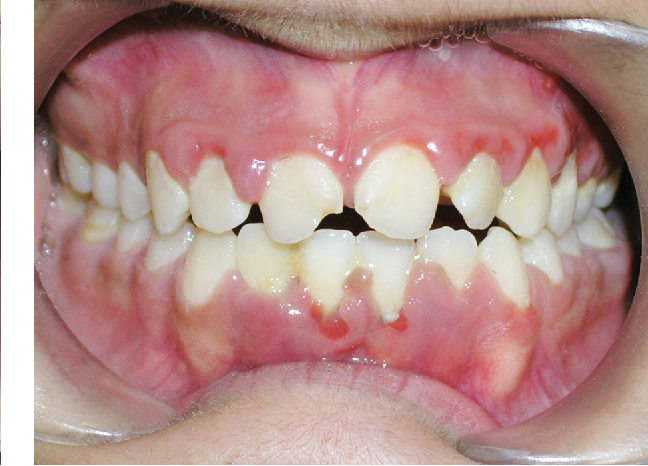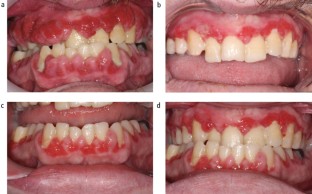

Results of clinical studies indicate that gingival inflammation increases the incidence and severity of gingival overgrowth in nifedipine-and/or CsA-mediated patients. The epithelial thickening induced by nifedipine and CsA is related to thickening of the spinous layer. The volume density of oral epithelium is significantly increased in CsA-induced gingival overgrowth as compared with non-medicated controls. showed that the thickness of the oral epithelium in nifedipine-medicated patients was some 5 to10 times greater than in healthy controls. Histologically, drug-induced gingival overgrowth is associated with thickening of epithelium with elongated rete pegs and fibrosis in the lamina propria, with increased numbers of fibroblasts. Therefore, changes in the turnover rate of gingival epithelium may affect progression of periodontal disease. The self-renewal capacity of the gingival epithelium contributes to gingival defense, since continuous desquamation of superficial epithelial cells prevents bacterial colonization. Keratinocytes are the dominant cells of the epidermis, constituting 90% of the gingival cell population. The gingival epithelium plays an important role in protecting against both bacterial infection and mechanical trauma. For this reason, it is obvious that a better understanding of the pathogenesis of DGO is one of the important subjects in clinical periodontology. This unwanted side effect may greatly influence the clinical course of gingival tissues and subsequent systemic health, if complicated. In general, DGO is clinically associated with gingival inflammation produced by microbial plaque. However, the exact mechanisms underlying the pathogenesis of drug-induced enlargement remain unclear, particularly of the immunosuppressive agents. The results suggest that the increased epithelial thickness observed in Cyclosporin A-induced gingival overgrowth is associated with increased proliferative activity in keratinocytes.ĭrug-induced gingival overgrowth (DGO) is an adverse effect of certain medicines such a immunosuppressive agents, antiepileptics, and calcium (Ca 2+) channel blockers. In addition, the degree of stromal inflammation was higher in the Cyclosporin A group when compared with the control group. There were differences between the Cyclosporin A group and control group in regard to proliferating cell nuclear antigen and epithelial thickness. Expression of proliferating cell nuclear antigen was evaluated in formalin-fixed, paraffin-embedded gingival samples using an immunoperoxidase technique and a monoclonal antibody for this antigen. Gingival samples were collected from 12 generally healthy individuals and 22 Cyclosporin A-medicated renal transplant recipients. The purpose of this study was to compare proliferative activity of normal human gingiva and in cyclosporine A-induced gingival overgrowth.

The mechanism by which the drugs cause gingival overgrowth is not yet understood. It is characterized by a marked increase in the thickness of the epithelial layer and accumulation of excessive amounts of connective tissue. Drug-induced gingival overgrowth is a frequent adverse effect associated principally with administration of the immunosuppressive drug cyclosporin A and also certain antiepileptic and antihypertensive drugs.


 0 kommentar(er)
0 kommentar(er)
